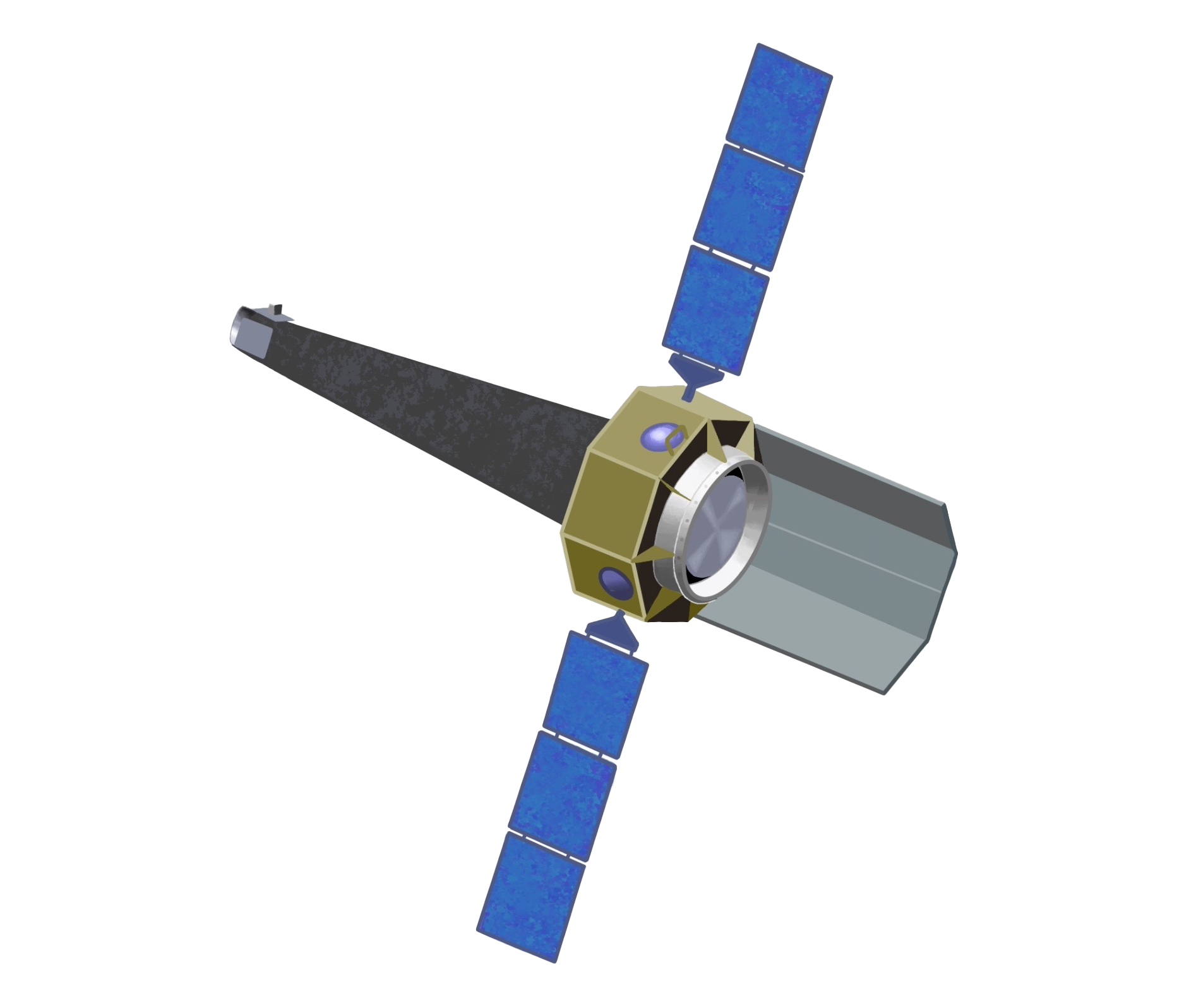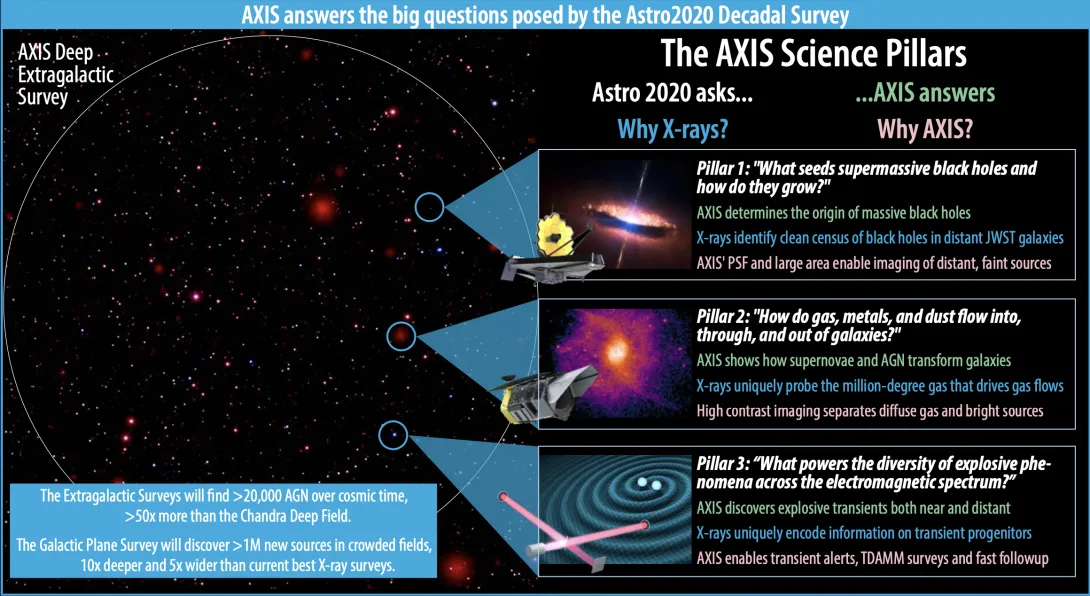
Advanced X-ray Imaging Satellite
AXIS
Next-generation, high-spatial-resolution X-ray observatory designed to transform our understanding of the universe
What is AXIS?
The Advanced X-ray Imaging Satellite (AXIS) will bring X-ray astronomy back to the forefront of modern mainstream astrophysics, working alongside other major facilities of the 2030s (e.g., JWST, Roman, Rubin, ngVLA, LISA) to address some of the most important questions identified by the Astro2020 Decadal Survey. With a single instrument design, AXIS will offer superb arcsecond-resolution and high-sensitivity imaging in the 0.3–10 keV band. AXIS is an excellent facility for transient science, with a two-hour response time to alerts and onboard rapid transient detection.
Why AXIS?
AXIS is a probe for the entire community. The sensitivity and angular resolution of AXIS also enable a broad range of general observer science and 70+% of observing time will be set aside for guest observers.
By the Numbers
NASA’s Explorers Program brings out some of the most creative ideas for missions that help us reveal the unknown about our universe. Establishing this new line of missions—the largest our Astrophysics program has ever competed—has taken that creativity to new heights. Both of the selected concepts could enable ground-breaking science responsive to the top astrophysics priorities of the decade, develop key technologies for future flagship missions, and offer opportunities for the entire community to use the new observatory, for the benefit of all.
Nicola Fox, Associate Administrator, Science Mission Directorate at NASA Headquarters in Washington

